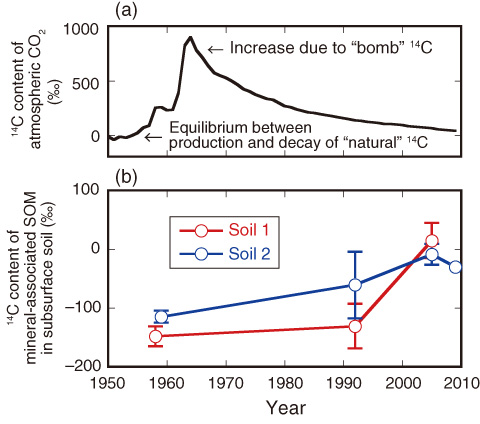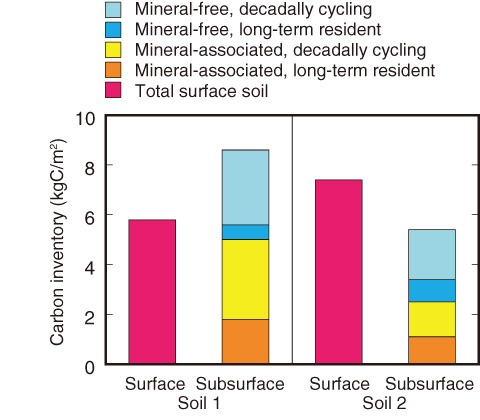
Fig.8-23 Carbon-14 content of atmosphere and subsurface soils

Fig.8-24 Stock and turnover of C in subsurface soils
Soil plays an important role in the global carbon (C) cycle through soil-atmosphere C exchange. Recent studies have shown that soils store more C in the subsurface horizons (20-60 cm depth) than in the surface horizons (the upper 20 cm). However, subsurface soil C has received little attention in terms of its contribution to C exchange because it has been thought to be very stable on the basis of its average age of centuries to millennia.
We used radiocarbon (14C) to identify the dynamic nature of C in subsurface soils. There are two main sources of 14C: “natural” 14C that is produced in the upper atmosphere by cosmic rays, and “bomb” 14C that was produced by atmospheric nuclear weapons testing during the early 1960s (Fig.8-23(a)). Similar to stable 12C, 14C in the atmosphere is fixed as organic matter by plants via photosynthesis and then enters soils. Carbon-14 decays with a half-life of 5730 years in soils; thus, a lower 14C content in soil organic matter (SOM) reflects a longer residence time of C in the soils. On the other hand, the incorporation of bomb 14C into the soils increases the 14C content in SOM. Therefore, we hypothesized that C exchange that occurs on timescales of decades through subsurface soils can be identified by tracing bomb 14C incorporation over the past half-century, if it really exists.
The 14C content was determined for subsurface soil samples taken several times from 1958 to 2009 at two forest sites in California. We found an increase in the 14C content in mineral-associated SOM with a time lag of >20 years after the increase in the atmosphere (Fig.8-23(b)). A model analysis showed that ~40%-70% of the SOM turns over on decadal timescales. We also found bomb 14C incorporation in mineral-free SOM and CO2 released from subsurface soils collected in 2009.
The results demonstrate that subsurface soils store a large amount of C that is exchanged with the atmosphere (Fig.8-24) and that a lagging response of the C to climate change is possible. The findings will improve our understanding of the global C cycle.
<Previous: 8-8 | Next: 9 Nuclear Hydrogen and Heat Application Research >